Futures Forum: all about it
The Futures Forum was a 2 day conference to talk about ideas and the future. It had a 6 month lead up program. I designed the program of the event and drove the lead-up. Mel Mury handled all the logistics. all together, it was a big success.
I realised that I’ve never actually done any kind of overall write up of it, so here one is.
The point (or why have this thing at all?)
BVN has retreats every so often where everyone gets together and reinforces the one studio ethos. We were overdue for one of these. James asked me to come up with a plan that made it do more than just get people to mingle. We decided that if we were going to do something like this then it had to do more than just be a knees up.
In a big architecture firm it’s easy to be consumed by project work. It’s very difficult to take the time to look around at all the things that are happening in the world. Synthesising all the new technology, social and political trends, and the like isn’t everybody’s idea of a fun night in.
This event was to be a way to get everyone to think about the future of practice. It had to change the culture of the whole studio from being a 20th century practice into a 21st century one.
What happened?
Two days of mind expanding talks on a tropical island, preceded by a six month program of events to get people into the right frame of mind.
In the lead-up
I had a hunch that an event as exciting as we wanted to run would have been a complete disaster if people had turned up cold. I wanted people to come into it with a lot of momentum; saying yes and asking why and how rather than thinking that it’s all too hard.
The events before the main event each did a job, and contributed to the overall momentum.
There was:
- An Iconathon
- An Architectural Office of the Future essay collection
- A [twitter campaign](architecture-bigquestions to find #architecture #bigquestions
- I’m —-: Ask me anything
- Lean canvas workshops
- Design a design business which ended with Pecha Kucha presentations on the beach by a bonfire.
- A few informal sessions when everyone just got together to discuss things.
Here’s a better explanation of each of these bits.
Iconathon
We started the whole process off my announcing the idea of the Futures Forum to the whole studio, we had people in Melbourne, Sydney, Brisbane, Bangkok and Canberra all linked by video conference.
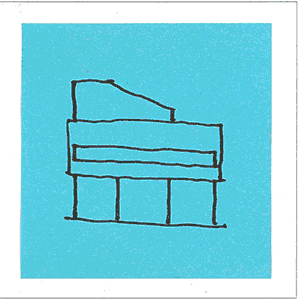
A quick flash through the posted note sketch icons.
Iconathons are an idea run by the Noun Project as a way to get groups people to come up with icon sets for civic reasons. They have a really good pack of materials that make running one simple.
Here’s the Iconathon photos12.
I went against one of their pieces of advice. They strongly advise that you get a fixed set of nouns, but I wanted people to converge on the important nouns of architecture. If I were to do it again I would have pre-chosen the words as a lot of the words that people were trying to illustrate weren’t nouns. It made for a really interesting insight into what people value in the profession, but it did make for some tricky subjects to draw.
Six icons finally made the cut for being illustrated3.
The icons that ended up being drawn up properly. Architecture, Detail, Hackable building, Modernism, Place and Shelter.
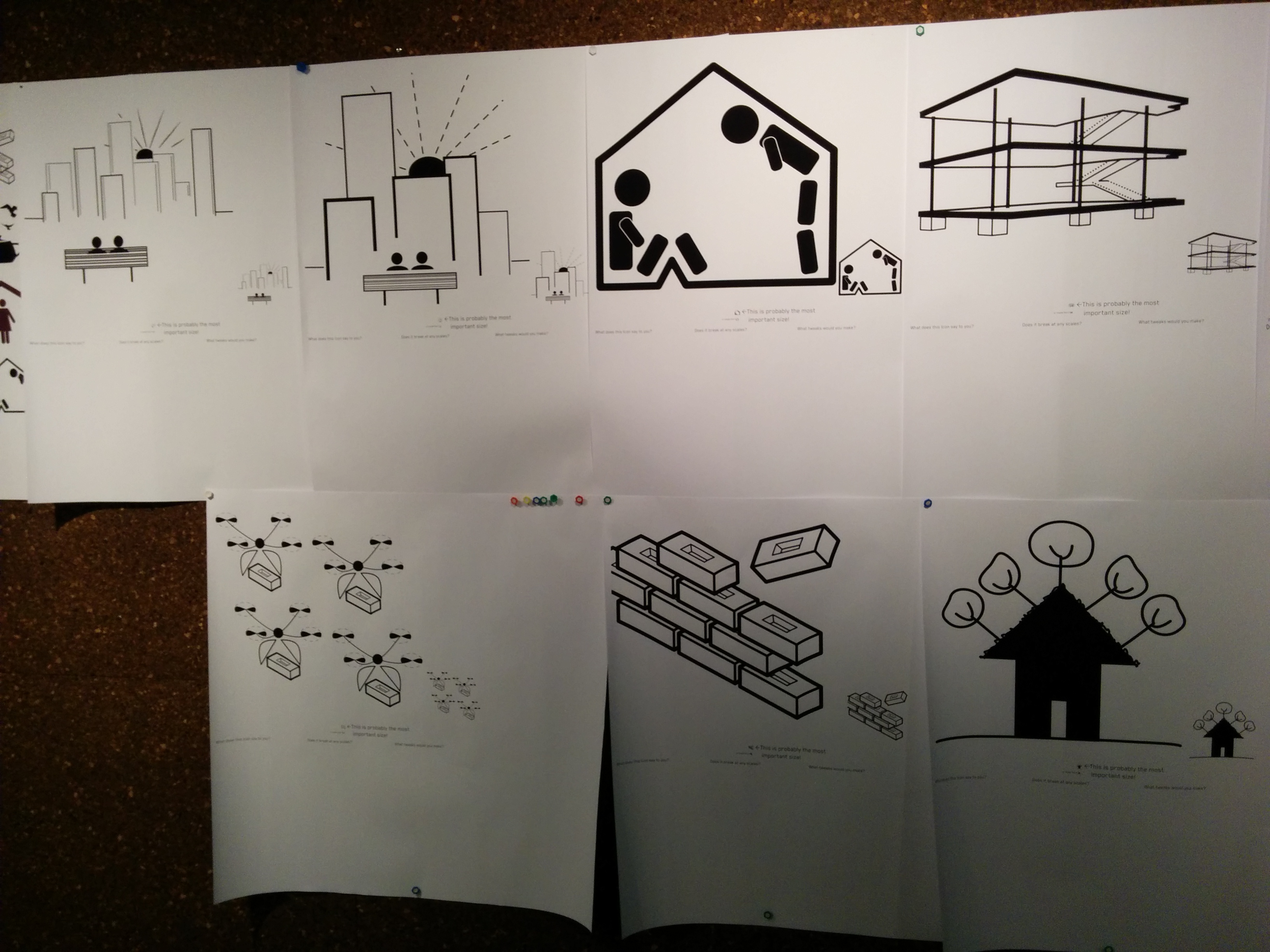
Some of the Icons after being drawn up for the first time.
Architectural Office of the Future (AOOTF)
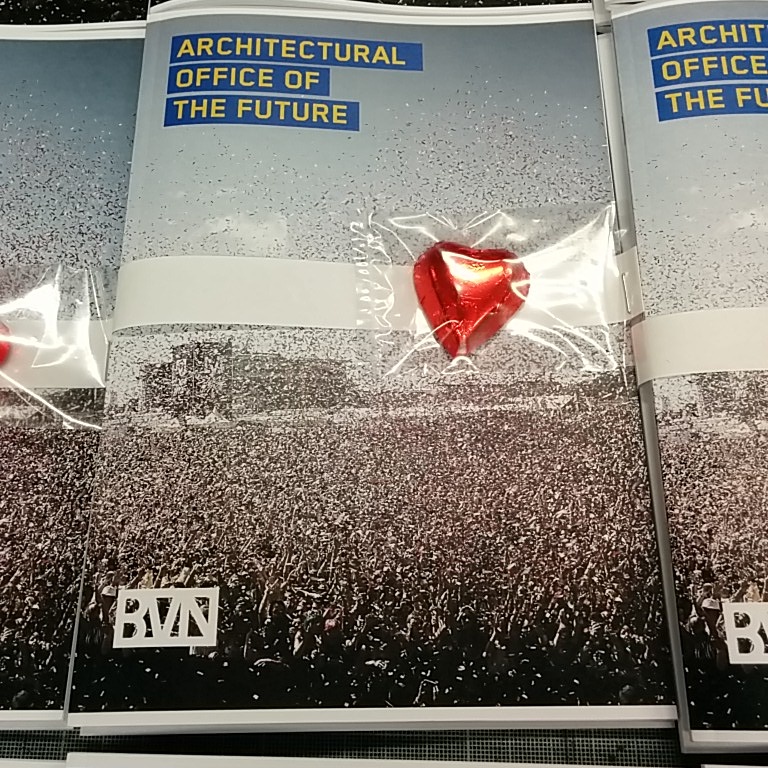
The many books, packaged up and ready to go, after the mammoth printing marathon.
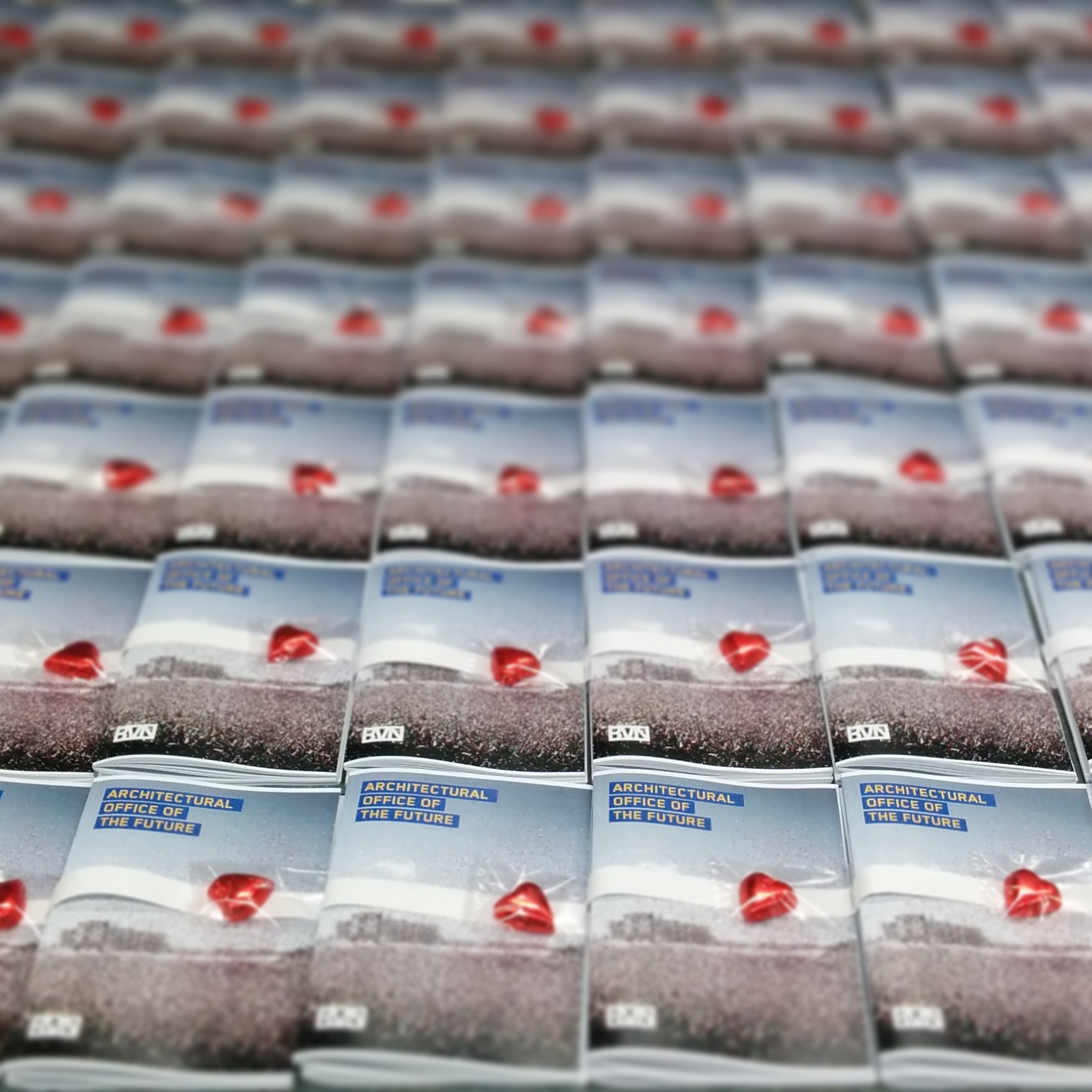
This was a collection of essays about the future of how architecture would be practised. The brief is in this footnote4.
It was the first thing we did that was challenging. It didn’t need everyone to be involved, but it had a great response. We had 23 essays that made it into the book in the end and a few more that were quite well formed ideas but that didn’t get written up by the deadline. There was a pretty good spread of word counts and they were all well written, not just dashed off at the last minute. I was very impressed.
The resulting essays were published in a book that everyone in the studio got as a valentine’s present. (There was also a little chocolate heart.) Afterwards we moved as many of the essays as we could to a Medium publication, but Medium has a pretty nice password feature that makes it a bit tricky to upload for people. Ultimately we didn’t get too many uploaded.
The book meant that people could take the essays home, read them on the bus, that kind of thing. This meant that we got a much better readership than if they were just posted on Tropos, the internal blog.
The essays were printed, and posted on the blog without names. The intention there was to make the responses to the essays based solely on the ideas contained, not on the author’s reputation. We also managed to get the internal blog visible to the outside world so that people could read and comment at their leisure5.
#architecture #bigquestions
In 1900 David Hilbert posed a series of 23 problems to the mathematical community.
These 23 questions have given the world of mathematics something to focus on for over a century. Some of the questions are still to be solved. Solving one pretty much guarantees that person a Field’s medal (Equivalent to a Nobel or a Pritzker prize). Architecture doesn’t have a set of key questions. This is a search to find some. A search to find if it’s even possible!
The introduction to the whole idea.
This served two jobs: the obvious one of finding out what they questions really were, and the stealth reason of getting people to engage with Twitter. It wasn’t specifically Twitter that mattered but engaging in a wider discourse. That discussions mediated by technology could be meaningful and not just ‘teenage drivel’.
The results were impressive. We were trending in Australia for a little while. We had some good engagement from people outside the studio as well as from within.
.@notionparallax we're now trending in Australia! Nice work @ArchitectureBVN pic.twitter.com/VbFtxFLwVM</p>— Chris Tate (@cr_tate) April 30, 2015
I’m —-: Ask me anything (AMA)
Based on the Reddit AMAs we did 21 sessions where someone would sit for a known time and answer anyone’s questions.
These had quite good engagement, with about 10% of people asking questions. The answers were all very good too. Generally, people asked direct questions and got direct answers. Some of these things had probably been buring away for a long time and there hadn’t been an opportunity to ask. This provided an opportunity, and also made everyone more aware of the diversity of people they work with.
Lean canvas workshops
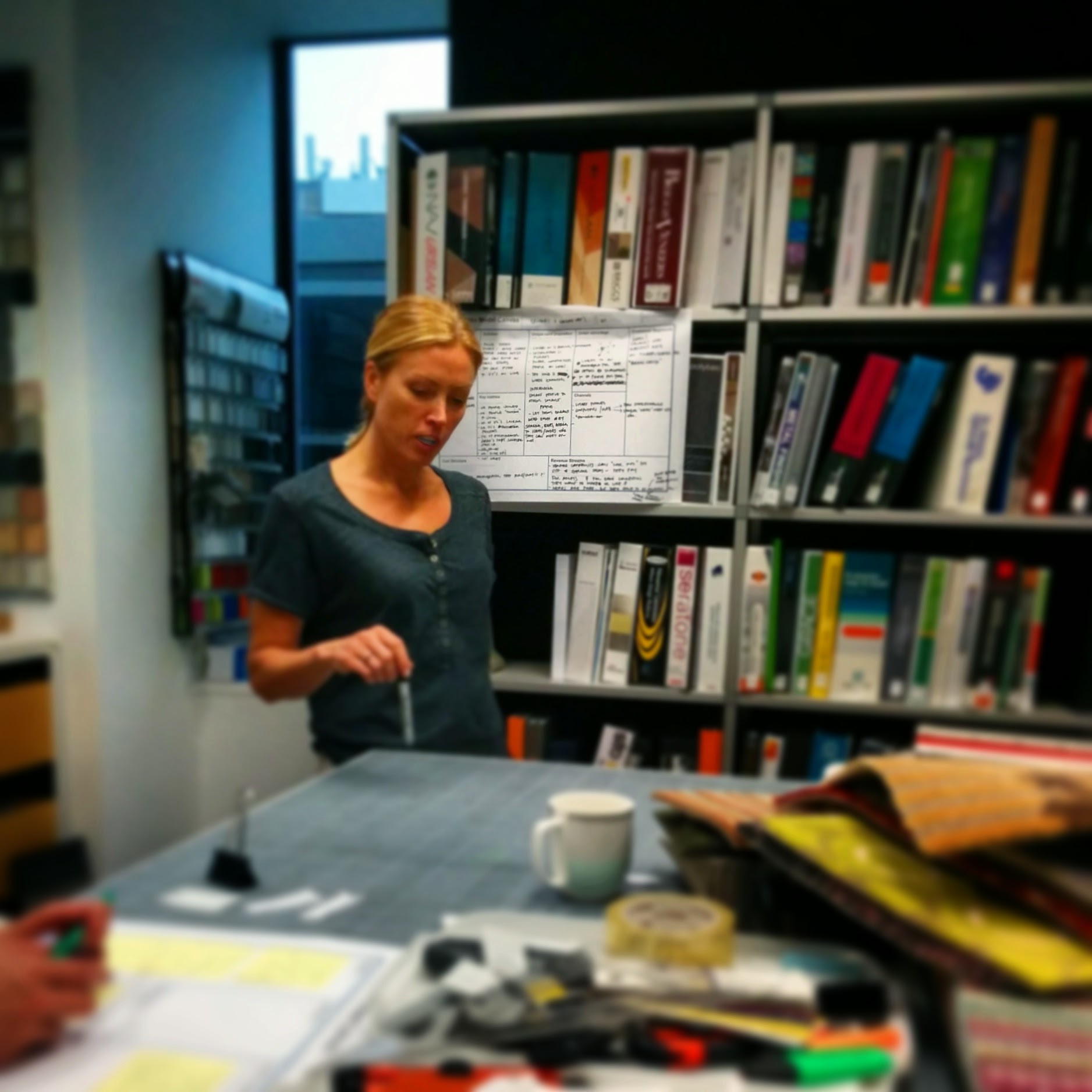
Ninotschka Titchkosky explains her canvas-generated idea.
I’m not sure about anyone else, but I find it much easier to edit someone else’s work than write my own. I’ll often get caught up in the details and struggle to get started. This workshop game people joke businesses, generated with it’s this for that. (Go there, it’s fun!)
There were several rounds of short pitches where each person pitched Wikipedia for hunters and Pandora for cheap vodka to each other. Once everyone was well warmed up they started on the canvasses.
The rigour imposed by the canvas turned several of the ludicrous inputs into some quite feasible businesses6.
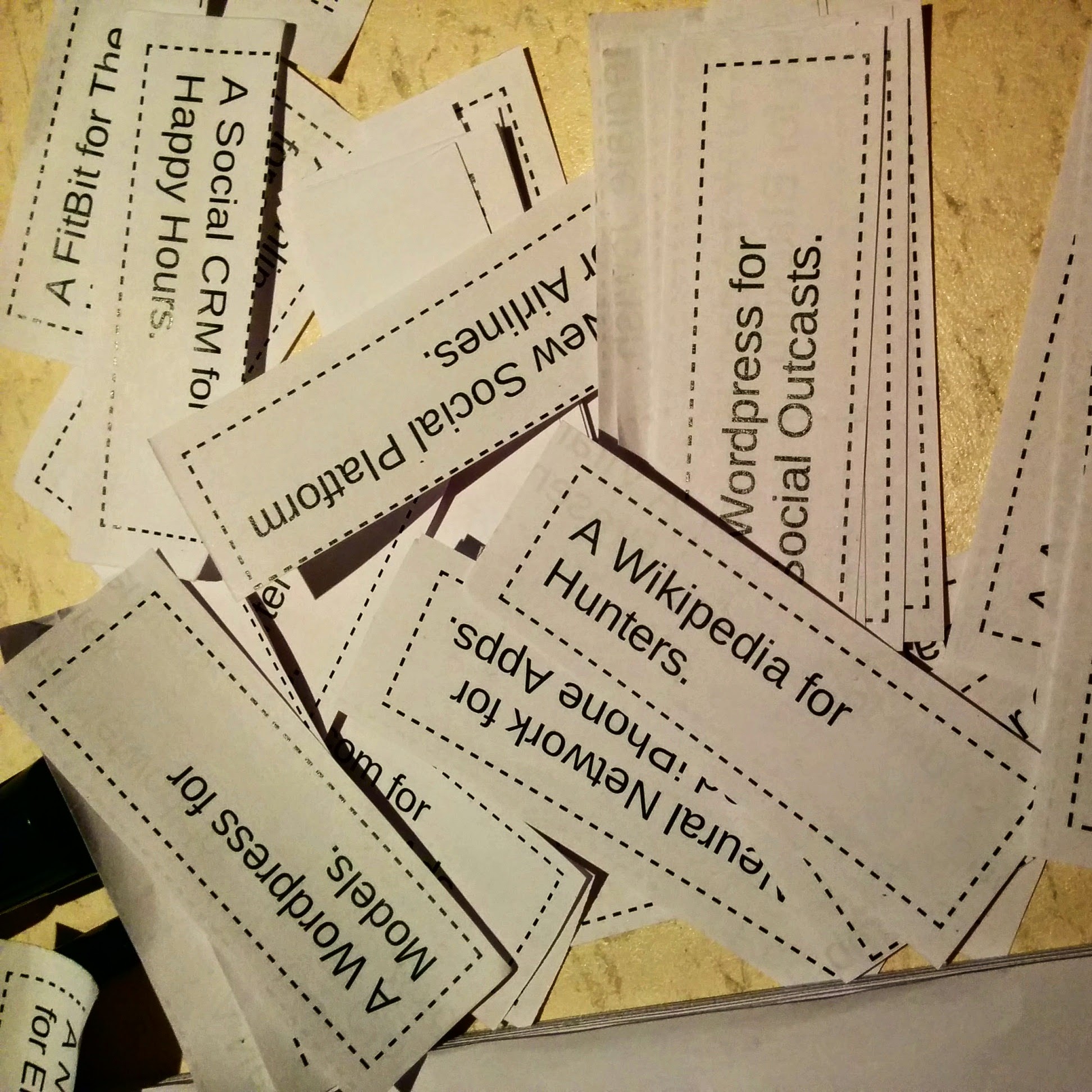
The auto generated business ideas.
This was a warm up for the next thing, the Design a design business challenge.
Design a design business
DADB was an open call for people to come up with a proposal for how a future design business would work. We were already quite far along in the process of generating enthusiasm about the event, and the future more generally. This project was run based on the Valve model, sort of a holocracy. Anyone can be involved, people should form teams based on their interests, and anyone can leave a team any time they like if they think it’s a dud.
The only real constraint was that the idea needed to be proposed at the actual event, using the Pecha Kucha format of 20 slides of 20 seconds each.
Tailored schedules
Can we get the same (or more) output (however you measure that) with different work schedules? This group did some surveys to gague how the studio felt about their schedules. They then did some real experiments and lived a few different schedules for a few weeks to see how they went. They did another survey afterwards to see what the impact on the participants’ lives were, and also the impact on those who had to interact with them (their team).
Open Source
How can we improve our situation by making the pie bigger for the whole industry? There are lots of assets that are created in order to practice, but that aren’t differenciators. Things like drawing standards, health and safety forms, some contracts etc. could be shared with the whole industry and then instead of ten practices spending ten months making ten mediocre documents, one group could make it, and then nine others could help polish it up to be the best document possible.
Wellness as an internal upgrade
If we are healthier, are we also more profitable? Can we turn investment into employee health into business benefit? This group was looking into this as an internal thing that could make the existing work better.
Wellness/PIM as a product
If the group above was looking at doing wellness internally, this one was investigating if it could be done as a product. By adding telemetry to a building’s occupants you can tell if the most important job of the building is being fulfilled – occupant satisfaction.
Idea investment
Is there a way to turn some sweat equity into an actual investment, but from within an existing organisation? This group was looking into finding ways to make that happen.
Diversification
If the architect was also the developer, and the funding model was crowd funding, what would that look like? This group was looking into the potential, and the current legal barriers to this actually happening.
AAC – architecture awareness campaign
This group’s premise was that the public knows about what forensic police do, they know what doctors do, even what airline check in staff do, but they are pretty much in the dark about what architects actually do. This was the only group to have one of their experiments fail, and to have a preconception overturned. This really strengthened their proposal in the end for a TV series.
At the event
We needed somewhere memorable, but at the same time practical and cost effective. I’ve never enjoyed any event I’ve been to inside a hotel. It’s always felt like I’ve been cut off from the world. The location we ended up with couldn’t have been more different to that.
Tangalooma resort on Moreton Island, just off the coast of Brisbane. It’s an old whaling station, and we were under the flensing deck. A gigantic and fantastically brutal version of a butchers block. The space that we used once housed giant rendering tanks for blubber, but now mostly housed a basketball court.
Unsurprisingly, people took a lot of photographs.
The space we had the Futures Forum in, before we occupied it.
Speakers
We had five invited speakers, representing different aspects of the way the things architects need to know about: Gitte Lindgaard7, people; Simon Longstaff8, ethics; Lucas Verweij9, design; Peter Buchanan10, architecture and Anton Andrews11, technology.
Each of them gave a keynote on the first day, and then held court for a symposium on the second day.
There might be some videos of those talks coming soon!
Web app
Details were being finalised until very near the end, we didn’t want to end up with printed information that was wrong. We also didn’t want to spend a big chunk of our budget on an app that would only be used for a couple of days—especially when web technology is so capable these days. This was still pre service worker but we still managed to make a website that would install to the user’s phone, and be available offline. The domain for the site has expired now, but it was bvn.camp12. You can still see a static version of the site if you click on the screenshot
This figure is half-width and floated left
DADB on the beach
Afterwards
general feeling in the studio
the commons
voting, how it went over its first year, other things
footnotes
-
Most of these photos are taken by Willis Lim, at least the good ones anyway! ↩
-
I can’t for the life of me work out how to embed a slideshow from Google photos. ↩
-
Final illustrations done by Patrik Typpo ↩
-
This is the post that introduced the essay collection:
Speculate
Posted on December 15, 2014 by Ben Doherty
Have you ever thought about what you’ll be doing in 15 years time? I bet you have!
Tl;dr: ‘Essay’ contest to find out what you think, culminating in a panel discussion and a publication.
The Futures Forum13 does a few jobs, one of them is to raise the profile of idea-having and idea-discussing. One of the things that we’re going to do is see if we’re able (we as in everyone14) to think critically or if that skill has been totally beaten out of us in service of a harmonious life and the meeting of deadlines15.
This post is a call for you to write a little piece—call it an essay if you like—about what you think the architectural office of the future is going to be like.

I’ve picked 2030 as a future date to target. 15 years ago we were partying like 1999 (because it was 1999), I had had a Hotmail account for about 2 years, I was a bit of a whiz at ACAD 12, but I still wouldn’t get a mobile phone for another 18 months. Quite a lot has changed in that period but a lot has stayed the same. What will change in the next 15 years?
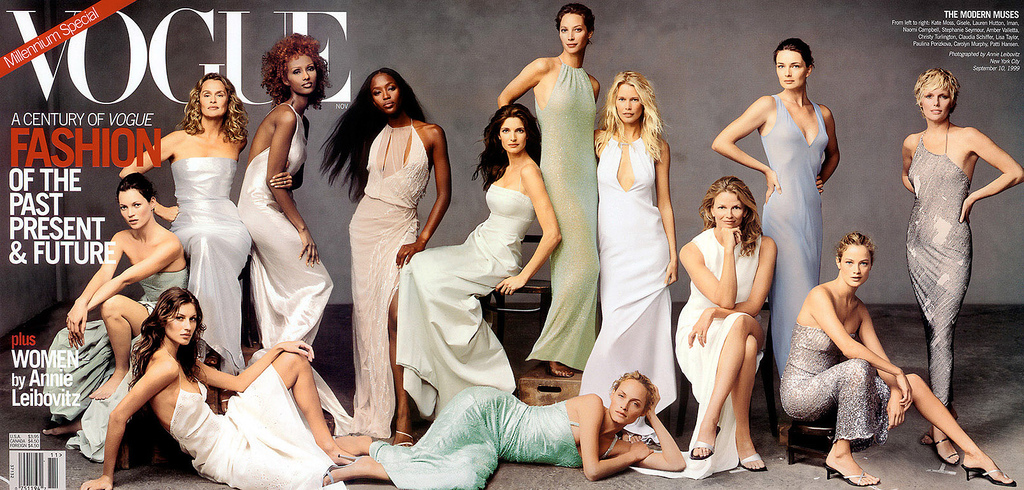
The essay will be a description of what this future practice is like. I don’t want to prejudice you too much by using the word practice, maybe in 15 years time the idea of practising architecture will seem quaint and ridiculous.
Once I have a load of these ideas they’ll go up on Tropos but completely anonymously. The idea of this is that without the weight of reputation behind it, the essay must stand entirely on its content. I’m hoping that this will also mean that people will be a bit more thoughtful in their comments16.
They will be released over a couple of weeks at the beginning of February, so it gives you plenty of time to mull it over.
Getting everyone to comment on anonymous essays means that we need to not leak the content of them or their authorship before we do a grand unveiling at the end. 17 In other words, if you write one of these, keep it to yourself for a while!
The format is entirely up to you so you can do it as a manga strip, a play, a regular essay or whatever you want.
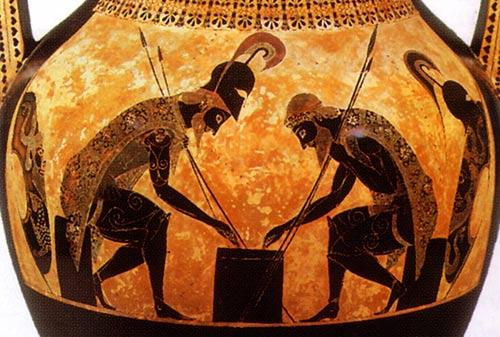
-
This was actually a pretty big deal. It took a heroic effort on a lot of peoples’ part! ↩
-
I’ve seen a couple pitched, since, as actual real businesses! We still had our fair share of assassinations-for-diamonds proposals, but at least they were well thought through! ↩
-
Gitte is a professor at Carleton university in Ontario, Canada and at Swinburne in Melbourne. Her work on Neuroaffective Design is about how computers affect the brains that use them.
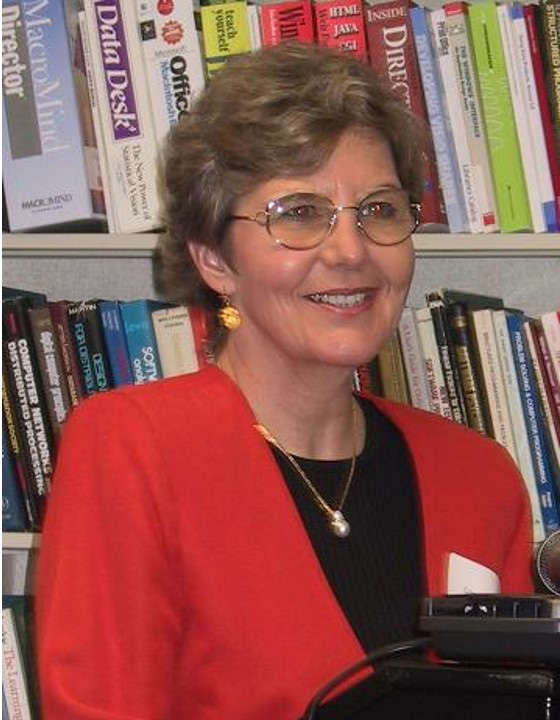
Gitte Lindgaard, PhD, RN, is a Distinguished Research Professor at Carleton University in Ottawa, Canada, and a Professor of Neuroaffective Design at Swinburne University of Technology in Melbourne, Australia.
Until 2012, she was Director of the Human Oriented Technology Lab (HOTLab) holding the prestigious Canadian Natural Science & Engineering Research Council’s NSERC/Cognos Senior Industry Research Chair in User-Centred Product Design. Prior to that, she was Principal Scientist and Head of the Human Factors Division at Telstra Research Laboratories in Melbourne for 15 years. She was Chair of CHISIG of the Human Factors & Ergonomics Society of Australia (HFESA) (1986-1992; 1998-2000) where she founded the OZCHI conference in 1986. She is a Fellow of the HF&ESA, and has been editor/associate editor of several international Human-Computer Interaction (HCI) journals since 1988.
Her research interests include aesthetics, cognition, and emotion in computing, and human decision making, especially in diagnostic medicine. She has published over 200 refereed papers, books, and book chapters.
Here’s some stuff about Gitte from the internet:
-
Simon Longstaff
Simon is the executive director of The Ethics Centre.
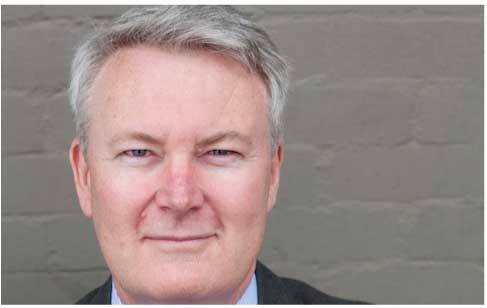
Here’s what The Ethics Centre website says about him:
Dr Simon Longstaff AO
Simon’s distinguished career includes being named as one of AFR Boss True Leaders for the 21st century with Carol Schwartz noting “…I don’t know one CEO or chairman in corporate Australia who has not worked with Simon Longstaff”. Simon has a PhD in Philosophy from Cambridge. Prior to becoming the inaugural Executive Director of The Ethics Centre in 1991, he worked in the Northern Territory in the Safety Department of BHP subsidiary, GEMCO, lectured at Cambridge University and consulted to the Cambridge Commonwealth and Overseas Trusts. Simon was inaugural President of The Australian Association for Professional & Applied Ethics and is a Fellow of the World Economic Forum. He is Chairman of the International Advisory Board of the Genographic Project and Deputy Chairman of the Global Reporting Initiative Board. He also serves on a number of Boards and Committees across a broad spectrum of activities in Australia.
The Ethics Centre (formerly the St James Ethics Centre) is entirely independent from the church. It is now a secular organisation that provides an open forum for the promotion and exploration of ethical questions.
Here’s some of what the internet has to say about him:
- 10 questions - Simon Longstaff (The Australian)
- At home with Simon Longstaff (SMH)
- St James Ethics Centre (wikipedia)
-
Lucas Verweij
Lucas is a designer and design critic.
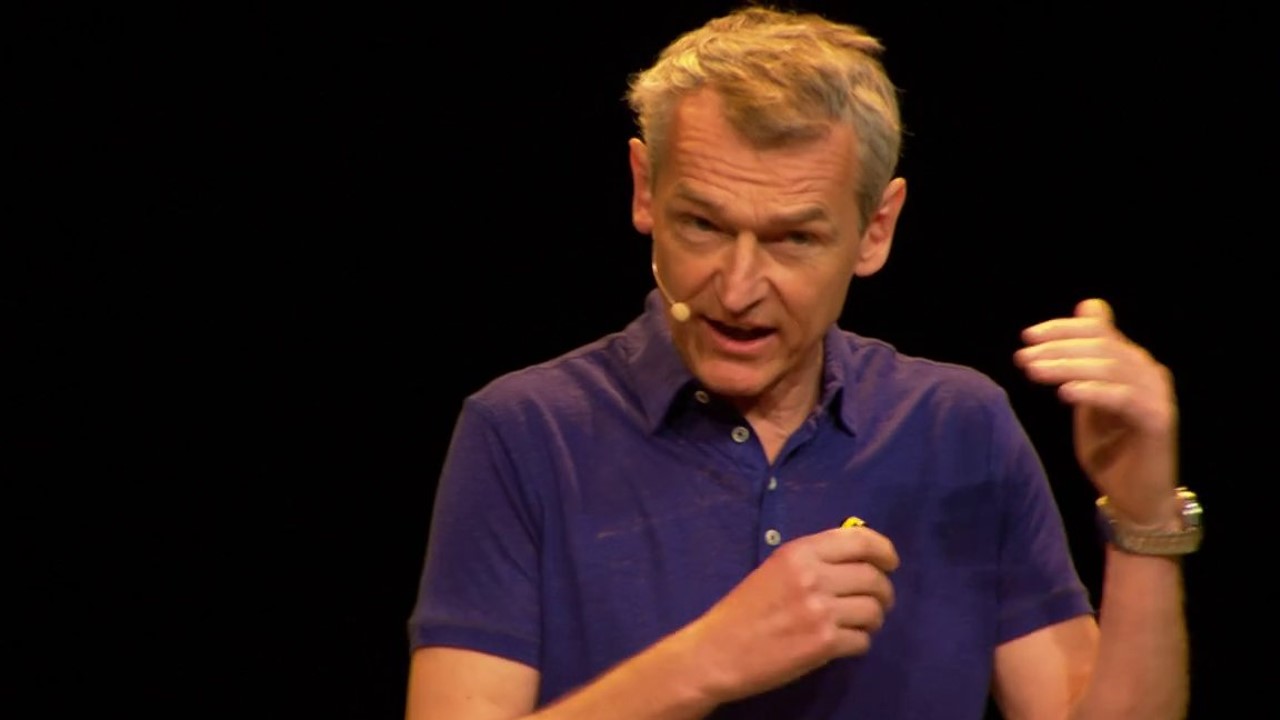
This is what he says about himself on his LinkedIn page:
In 2009 I moved to Berlin to contribute to this vibrant city. I work as an event initiator, writer and moderator in the field of design. I was a guest professor at both the Berlin design faculties (Weißensee & UDK). I worked with organizations such as ‘Design and Government’, DMY, International Design Zentrum and Palomar5.
I founded a design office in 1996. We designed projects for different governmental bodies. Some mapping projects (such as Randstad and Nieuwe Kaart) and public spaces.Quite some projects were self-initiated. Schie was a typical example of the nineties Dutch Design attitude, as described in ‘Superdutch’ and ‘Artificial landscape’.
In 2001 I moved to Premsela, Dutch platform for design. I worked as a program-manager. In 2005 I changed to the Academy for Architecture and Urban design in Rotterdam. I was the Dean (director) until 2009. I started a magazine (Huig) and initiated masterclasses for urban-planners. With students we researched the impact of Olympic games on cities, which ended in a show in the Dutch Architecture Institute (Nai). I co-founded a Design platform in Rotterdam (dpfr.nl), that still exist. We stage discussions and meetings for professionals in the creative industry.
I have been writing during my whole career, for online and offline architecture and design magazines such as Dezeen, Items, Archis, SR & O, and Archined. Some of the articles are on my blog. I have moderated many discussions and sessions in the field of my work. I interviewed designers and architects in public. Some of those the interviews are on my blog as well.
I train people in public speaking and communicating, in designschools (such as Design Academy Eindhoven and Royal Academy of Art, The Hague) and in private settings. Most of the customers work in design and innovation. With others I taught in winter-courses on Moderation.
Specialties:Moderating and Interviewing on design, architecture and innovation.
Here’s some more stuff about Lucas from the internet:
- Lucas_Berlin (his own blog)
- Lucas Verweij the linkedIn perspective
- Lucas_Berlin on Twitter
- Lucas writes for Dezeen
- What design can do
-
Peter Buchanan
Peter has worked as architect and urban designer/planner in parts of Africa, Europe and the Middle East since. He wrote The Big Rethink series of essays in The Architectural Review, and is now expanding it into a book.
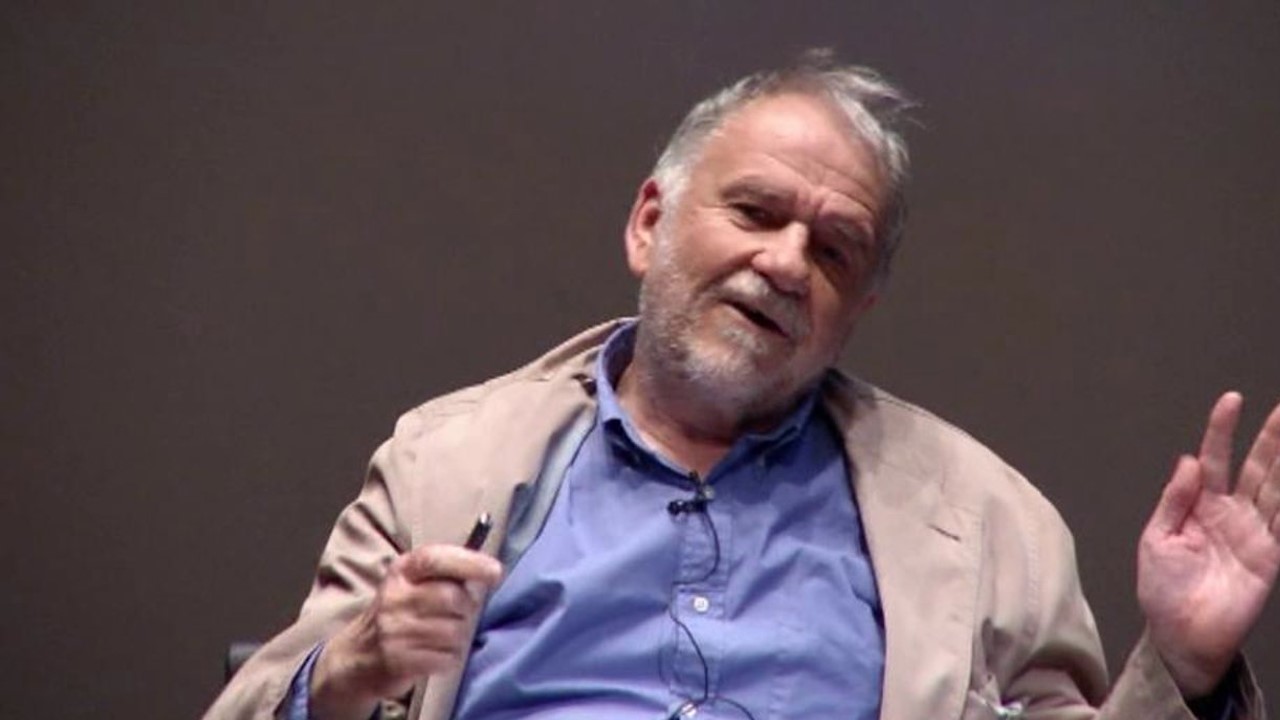
When you’ve had a career like Peter’s it warrants going into it in a bit more detail:
Born in Malawi and schooled in Zimbabwe, Peter Buchanan studied architecture at the University of Cape Town, graduating B.Arch in 1968. He then worked with two leading Cape Town architects: Gabriel Fagan (1969-70) and Revel Fox and Partners (1970-71).
In 1972 he moved to London and worked until 1976 for Halpern + Partners on commercial and planning projects. From 1976 until 1979 he worked for Sidell Gibson Partnership master-planning the extension of the city of Arak in Iran.
In 1979 he joined The Architectural Press as an editor and writer on the Architect’s Journal and The Architectural Review, becoming Deputy Editor of the latter in 1982.
Since 1992 he has freelanced as a writer, exhibition curator and consultant in environmental design and planning. He curated two exhibitions for The Architectural League of New York: Renzo Piano Building Workshop: Selected Projects in 1992 (for which he also wrote the catalogue) and Ten Shades of Green in 2000, both of which travelled extensively over several years. In 2000-01 he was a consultant to the Greater London Authority’s Planning Decisions Unit and its Spatial Development Strategy.
When an editor, he wrote copiously for The Architectural Review and Architect’s Journal, including entire special issues of the AR on the Netherlands, Spain and Northern Switzerland (and later the Kansai International Airport) and edited a commemorative issue on Le Corbusier. Many of his articles in AR and AJ were republished in other languages and he has written for journals in the Netherlands, Spain, France, Germany, Poland, Italy, USA, Canada, Japan and South Africa. He has been an editorial advisor to many journals, was on editorial boards of Architecture + Urbanism (Japan), Daidolos (Germany) and Harvard Design Magazine (USA) and now is on that of The Architectural Review.
Besides writing the catalogues to the exhibitions for which he was curator, he has contributed essays to other catalogues, including on Aldo and Hannie van Eyck and Thomas Herzog, and to several monographs on contemporary architects. His books include the five volumes (each in six different language editions) of Renzo Piano Building Workshop: Complete Works (Phaidon Press) and Ten Shades of Green (W W Norton).
He has featured on BBC radio programmes on James Stirling, Iannis Xenakis and Le Corbusier and television appearances have included programmes on Santiago Calatrava (BBC) and Kansai International Airport (Discovery Channel).
He has been studio tutor, visiting critic and lecturer at various universities, master classes and summer schools and given public lectures in many countries, including the UK, Spain, the Netherlands, Denmark, Norway, Finland, France, Greece, Switzerland, Croatia, Poland, Portugal, Japan, USA, Canada, Brazil, Argentina, Peru, Mexico, Curacao, South Africa and Uzbekistan.
In 2003 he gave the Sofia Gray Memorial Lecture in Bloemfontein, South Africa. In 2008 he taught a two-week theory course to Masters students at Pamplona University and a day-long CPD course in all the main New Zealand cities. In 2010 he taught a one-week master class setting architecture in a 21st-century context to professors at ITESM in Monterrey, Mexico.
In 2012-2013 he wrote a series of influential essays, The Big Rethink, for The Architectural Review. He is presently expanding these and adding more essays in a forthcoming book. ↩
-
Anton Andrews Anton runs the Office Envisioning team in Microsoft.

They create next generation prototypes and videos that portray a vision of the future of productivity. He previously founded the Design Strategy team in Microsoft’s Entertainment Division, focused on next gen experiences for Xbox, Zune and Windows Phone. Before coming to Microsoft, Anton was a creative director in design research at Philips Design in the Netherlands.
Whether facilitating hundreds of in-house engineers around a common vision, or working with executives to define it, Anton has maintained a focus on using experiential prototyping and design driven storytelling to bring human-centered experiences to organizational strategy.
Anton has a PhD in Biophysics from King’s College London and a degree in Product Design from Central Saint Martin’s School of Art and Design.
Here’s some stuff about Anton from the internet:
-
The site used a slightly overcomplicated setup with git hooks and another server in order to use
picturetags instead ofimgtags. In hindsight, as everyone was using it on a phone,imgwould have been fine and the workflow would have been much simpler. ↩ -
I’ve been reading about configuration spaces recently and I’m more torn than ever about whether future ought to be plural in this context. ↩
-
where ‘everyone’ means everyone who works here, everyone who makes a contribution to our continued existence, not just those with an architectural education – I think that that kind of apartheid thinking is reprehensible, but if you disagree I’d love to hear why in your essay! ↩
-
To stave off accusations of pessimism: I believe the former, this is more of a case of disproving the null hypothesis. Also, if I really believed that we weren’t capable I wouldn’t be involved in this endeavour at any level. ↩
-
Before you think to yourself “I would never let the identity of the author influence my opinion of their ideas”, countless studies have shown that you won’t be able to prevent that from happening. They’ve also shown that you would have said that too! ↩
-
Although if you’d like to remain anonymous perpetually then that’s fine too! You get to control the release of your identity. ↩
